Home » Food & Beverages » Pickles / Puree / Jam Glass Jars
Newray has been a professional manufacturer of glass jars for pickles, purees, and jams for over 50 years. We offer comprehensive packaging solutions for premium food and beverage producers and manufacturers worldwide.
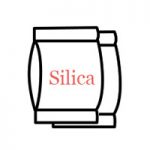
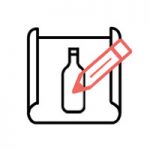
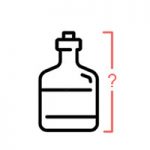
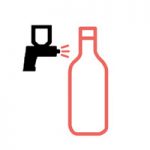
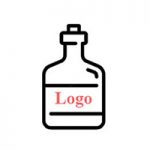
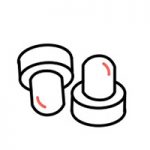
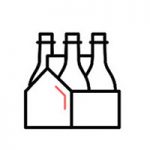

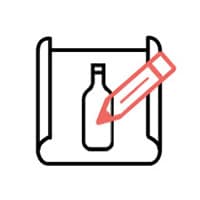
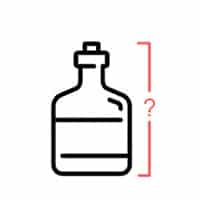
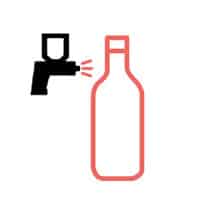

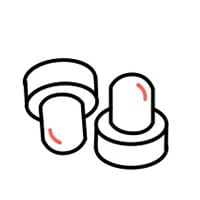
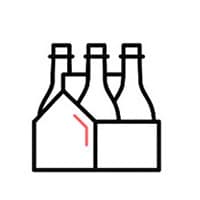
Founded in 1970, Newray Packaging Solutions is a leading daily-use glass min jam jars and large glass jam jars manufacturing enterprise. We proudly export to 120+ countries and partner with 2,300+ global customers. As a leader in the industry, we are at the forefront of global glass manufacturing, dedicated to addressing packaging challenges for our customers and committed to their success.
In NEWRAY, you can choose from a wide range of wholesale empty glass jam jar packaging and bulk packaging containers for pickles, puree, jams, jelly, honey, birds-nest, soft beverages, sauce, preserving, cookies and dressing. If you are a new start-up doing business for oil, margarine, mayonnaise, ketchup, or vegetable fat, NEWRAY has a large selection of sizes and shapes wholesale bottles and jars for you, low MOQ & fast shipping to support your business.
We are also dedicated to supporting our customers through glass production, packaging, caps solutions, label production, and other OEM Processes.
Since Newray is a direct supplier of glass food containers with lids, we offer customization options for our bottles. You can personalize them with decorations and designs, including neckbands, embossments, and labels that showcase your company logo or graphics. We welcome orders for both bulk glass food containers and glass canning jars with lids and custom-designed glass containers for kitchen.
Our Newray has over 1000 styles of glass jam jars, jars for honey, glass candy jars, and glass cookie jars. Some products are customized bottles for customers, with customers' patents. Some products are Newray's classic design bottles, which all the customers can use.
The minimum order quantity (MOQ) is 200,000 pieces for jars weighing less than 500 grams. If the weight exceeds 500 grams, the MOQ is 100,000 pieces.
The mold fee for each design ranges from $5,000 to $6,500, depending on the design and size.
Yes, we can supply jars with corrosion-resistant lids, which are especially important for products with higher acidity like pickles. Here are some common corrosion-resistant lid materials:
1. Tinplate Lids with Epoxy Coating:
Tinplate lids with food-safe epoxy coatings are the most common choice for sealing pickles jars. The epoxy coating provides excellent corrosion protection, and these coatings are available in both high-temperature and low-temperature versions. The high-temperature coating can withstand sterilization at 121°C, while the low-temperature coating is suitable for sterilization below 100°C. This coating prevents reactions between the lid and the acidic brine of the pickles. Many food manufacturers use tinplate lids with epoxy coatings to seal products like apple cider vinegar and salad dressings, which are also highly acidic.
For products like fruit jams that have high acidity, stricter manufacturing processes are essential. The tinplate must be sourced from a reputable steel factory to ensure quality, as cheaper metals can rust easily. Additionally, the printing process and rust-resistant oil treatment need careful handling.
To prevent direct contact between the metal and the acidic contents, the inside of the lid should be coated with a full rubber lining. Even the best coatings can corrode if the contents are too acidic or if the lid is not used properly. For example, if food spills onto the bottle neck and is not cleaned properly, the contact with the lid's edge could result in rust.
At Newray, we work with lid manufacturers who apply two layers of rust-resistant oil on the inside and one layer on the outside. While the printing cost may be higher, this approach provides a more effective anti-corrosion solution.
2. Plastic Lids with Corrosion-Resistant Linings:
Some plastic lids have corrosion-resistant linings made from materials like polyethylene, polypropylene, BPA-free resins, or food-grade silicone. These materials not only resist corrosion but also provide some leakage prevention, protecting the contents from oxidation by blocking oxygen. Such lids are often used for carbonated beverages, sodas, and fruit juices.
3. Coated Aluminum Lids:
Aluminum lids can be coated with a protective layer to prevent corrosion. They are commonly used in the food industry for products like sauces or pickles. However, aluminum lids have less sealing performance compared to tinplate lids, and they tend to be more expensive. They are typically used for cold-fill products like fruit juices and beverages.
4. Stainless Steel Lids:
Stainless steel, especially grades like 304 or 316, is highly resistant to corrosion and can withstand acidic environments. It is also durable and has excellent hardness, making it a great choice for home-use pickle jars. However, stainless steel lids are significantly more expensive—several times the cost of tinplate or aluminum lids—and are generally suitable for kitchen use in reusable glass storage containers.
Each type of lid plays a different role, so it’s important to choose the right lid for your product based on its characteristics and your cost considerations.
Glass: The Pinnacle of Packaging Materials
Glass is undoubtedly the finest packaging material to date, as if it were born for packaging. Its unparalleled barrier properties—impermeable to air, moisture, and contaminants—ensure that contents (such as jam, honey, pickles, hot sauce, etc.) remain fresh and uncontaminated. Glass is free of BPA and heavy metals, FDA-approved, and chemically inert, meaning it does not react with acidic or high-sugar foods, perfectly preserving flavor and safety. Additionally, glass boasts excellent heat resistance. For example, glass bottles produced by Newray can withstand high temperatures of up to 121°C and 30 minutes of boiling without damage, making them fully suitable for the pasteurization process of jam.
Precision Design of the Neck and Cap
The neck and cap design of glass jars further enhances their functionality. The wide-mouth neck facilitates production filling and consumer use, while the precision threading ensures a tight seal with metal or plastic lids, effectively preventing spoilage and maintaining freshness even with repeated use. Professional designers also take into account the risk of collisions during transportation to avoid loosening of the lids, thereby reducing product loss during handling and shipping.
Aesthetics and Sustainability
The high transparency of glass amplifies the appeal of food, giving it a natural attractiveness. Through molds of various shapes, glass bottles combine functionality with visual appeal, conveying a premium brand image. Moreover, glass is 100% recyclable and reusable, fully aligning with sustainability goals and consumer demand for eco-friendly packaging.
Glass is not just a container; it is a strategic choice. It ensures product quality, enhances brand value, and meets the expectations of both consumers and regulatory bodies. The design of the neck and cap further solidifies its practicality and appeal, making it an ideal packaging solution for jam and other food products.
The popping sound you hear when opening a glass jam jar is usually caused by the vacuum seal created during the canning or packaging process. The safety button on the lid of glass jam jars typically serves the following functions:
Vacuum Seal: The jam is usually heated and filled into the jar at temperatures between 85°C and 95°C, then sealed in the glass jam jars. As the jam cools, a vacuum (negative pressure) is created inside the jar. This causes the safety button on the metal lid to be sucked in due to the negative pressure. This vacuum helps prevent air (and microorganisms) from entering the jar, thus preventing the jam from spoiling and preserving the contents.
Indication of Proper Seal: The raised "button" or "dome" on the metal lid is concave when the jar is sealed due to the negative pressure. When the jar is first opened, the release of pressure causes the safety button to pop up, returning to its normal raised position. This popping sound indicates that the jar was properly sealed and that the vacuum was intact before opening. The design of the safety button is meant to indicate whether the container is sealed correctly, ensuring food safety. This is also why jam jar lids often carry the warning "Do not use if safety button is raised."
In the production and quality control process of jam jars, our Newray implements strict quality control measures to ensure the sealing and leakage resistance of the bottles. Below is a concise outline of the production and inspection process:
1. Quality Control in Design and Production
The neck of the jam jar glasses is critical to its functionality. During the design phase, our designers establish precise specifications for the neck's tolerances, thread height, external dimensions, internal dimensions, neck height, angle degree, and parallelism. Once the design is finalized, the production and quality inspection departments closely adhere to these specifications during manufacturing and inspection.
During the mold-making process, high precision is employed to verify the dimensions of each component, ensuring uniformity and tolerance in the neck and wall thickness of the bottles. Different neck sizes have strict tolerance ranges to guarantee a perfect fit with the cap.
2. Sealing Design and Cap Assembly
- Cap Design: Caps are typically made from tinplate, aluminum, or plastic. Tinplate caps usually have a layer of glue on the inner side, which is vital for sealing the bottleneck. This is one of the reasons why jam jars are often paired with tinplate caps. PE and silicone gaskets in aluminum caps can also provide sealing; however, tinplate caps are generally more effective.
- Cap Production: The tinplate used for caps comes in various thicknesses and hardness levels. When selecting caps, it is essential for the filling factory to request a composition analysis or test report for the glue used in the caps to ensure it is BPA-free. For instance, the European market requires caps to be plastic-free, leading to the need for higher-cost TPE-gasketed tinplate caps. Reputable cap manufacturers pay special attention to tolerance values during production to ensure the cap forms a tight seal with the bottleneck, preventing leakage.
3. Quality Inspection Process
Automated vision inspection systems check for defects in the bottle neck and body, such as cracks or issues with neck smoothness. Laser measuring instruments ensure the precision of the bottleneck dimensions, with neck thickness typically controlled between 2.5mm and 3.5mm.
4. Final Inspection and Packaging
All qualified products undergo random sampling inspections and are packaged using professional shockproof materials to ensure the safety of the bottleneck during transportation. This process ensures that the goods received by customers are intact and meet filling requirements.
Through these meticulous production and quality control processes, glass bottle factories ensure that each bottle provides excellent sealing and leakage resistance, effectively meeting market and customer needs.